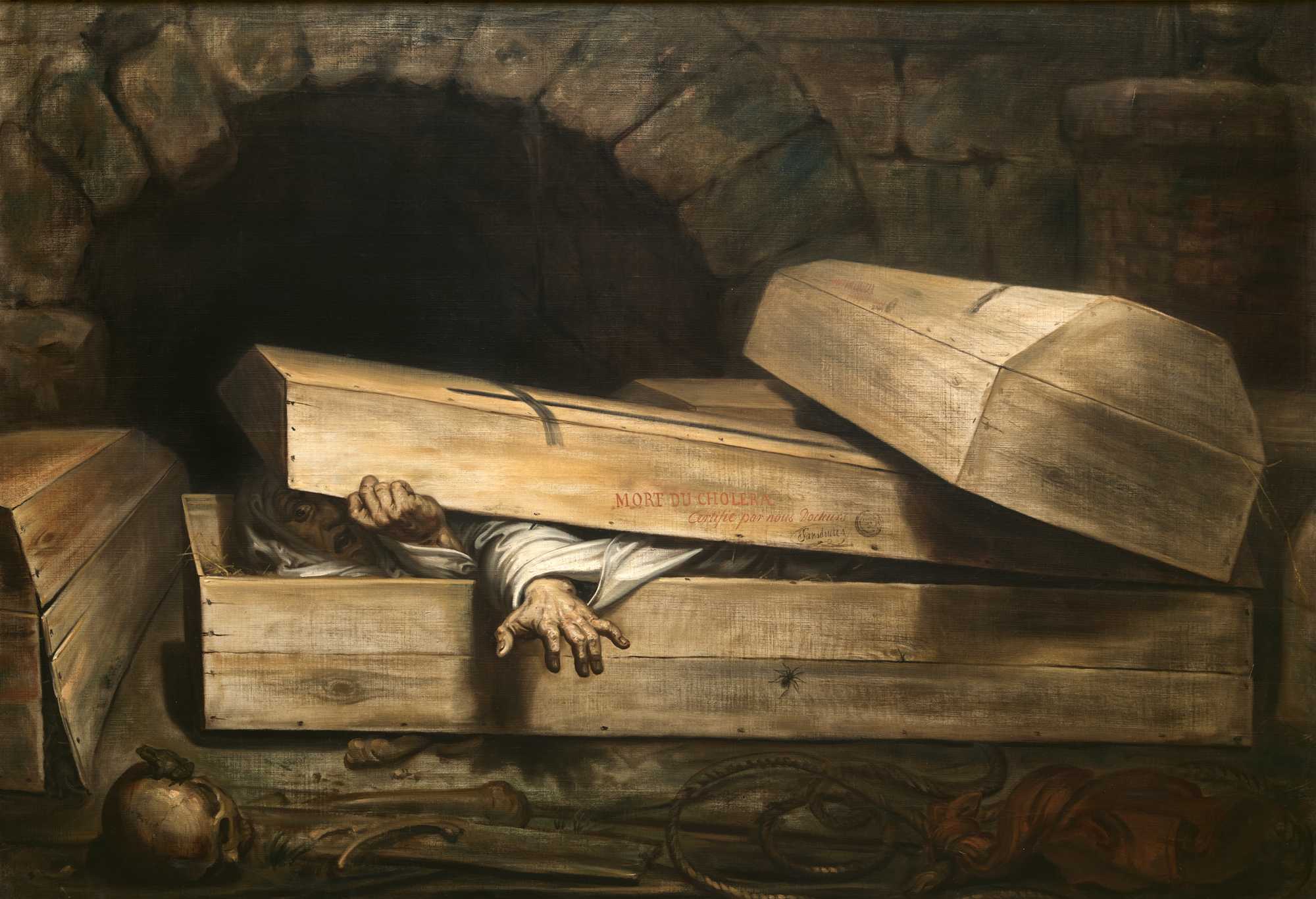Something a little bit different from me this time……….whoever said history was boring?
Somebody recently sent me a very interesting story regarding the origins of some well-known phrases associated with graveyards and burials and as you can imagine, this piqued my interest a little. I have more than a passing interest in the past and in particular I can be rather obsessed about finding the burial places of my ancestors, hence why I was somewhat intrigued by what I had read. I found the origins, or should I say, the ‘etymology’, of these sayings absolutely fascinating. All these sayings in the article that I read fitted their descriptions perfectly, almost too perfectly, but were they fact or fiction? Shall we find out……
So, the legend goes;
England is old and small and the local folks started running out of places to bury people. So, they would dig up coffins and would take the bones to a bone-house, and reuse the grave. When reopening these coffins, 1 out of 25 coffins were found to have scratch marks on the inside and they realised they had been burying people alive, so they would tie a string on the wrist of the corpse, lead it through the coffin and up through the ground and tie it to a bell. Someone would have to sit out in the graveyard all night, thus working the graveyard shift, to listen for the bell; therefore, it was possible that, someone could be, saved by the bell or was considered a dead ringer, if the bell was used.
Entirely plausible? Maybe?
The internet is of course littered with hundreds of examples of the origins of different phrases and how they developed and evolved over time, but how do we differentiate between fake and folklore? So let’s dissect, pardon the pun, these individual myths and try to debunk some of these theories.
There are a lot of stories about how people in the past were terrified of being buried alive and this part of the story is entirely true, people did have a genuine fear of being buried alive and it’s this subconscious fear, that allows the myth to manifest. Again, another part of this story is true, there was a type of ‘safety coffin’ invented in the late 1800’s by Count Michel de Karnice-Karnicki, who was chamberlain to the Tsar of Russia. The Count patented his own safety coffin, called a Le Karnice, in 1897 and demonstrated it at the University of Paris, the following year. His design detected movement in the coffin and opened a tube to supply air while simultaneously raising a flag and ringing a bell. No ball and string involved here I might add. The Counts invention was inspired by the true story of a young girl who was almost buried alive. However, these coffins were very rarely used and there’s no written account of them ever saving anyone.

Moving onto the etymology of the term, ‘graveyard shift’, this has its roots and origins back as far as the Industrial Revolution, when factories needed to increase production and operate around the clock. The late-night shift was nicknamed the ‘graveyard shift’ because of the quiet and stillness associated with the graveyard during the wee small hours. As someone who worked shift work all their working life, I know exactly how lonely a 12-hour night shift can feel. One of the first documented uses of the term is in the May 15, 1895 edition of the New Albany Evening Tribune, which started a story about coal mining by writing, “It was dismal enough to be on the graveyard shift…”. So, the term has no connections to a ‘real graveyard’, it literally means working a night shift, it’s as simple as that.
Similarly, ‘dead ringer’ and ‘saved by the bell’ have totally different etymologies, neither of them connected in any way to a graveyard or burial!
A ‘ringer’ was the name given to someone who served as a stand-in for someone else in a sporting event, and is a phrase that is still used today. If like me, you have played Sunday League Football, then I am sure that at some point you would have turned up on a Sunday morning to find yourself a player short. The obvious solution to this dilemma was to use a ‘friend’, who was a non-registered player, to make the numbers up, which would therefore make him a ‘ringer’. Similarly, in the world of horse racing, occasionally people would secretly replace a slower horse for a faster horse – or vice versa – for betting purposes. For this to work, the two horses would have to look very similar to each other. At the time, the word ‘dead’ was often used to describe something exact or precise, hence the phrase, ‘dead centre’, so a ‘dead ringer’ was a substitute that looked identical to the original horse, which is why the phrase is now used to describe someone or something who looks the exact same as someone or something else and has nothing to do with being buried alive
Moving onto our last myth to unravel, ‘saved by the bell’, this is a phrase has nothing to do with coffins at all and the only connection with a box is a boxing ring! The phrase originated in the late 1800s, and first was used to describe losing boxers who were saved from defeat by the sound of the bell that had signified the end of the round. The first written reference to this phrase, according to boxing historian Christine Lewis, was from a February 1893 edition of the Fitchburg Daily Sentinel, covering a fight between Martin Flaherty and Robert Burns. “In Martin Flaherty’s 32 round knockout victory over Robert Burns on February 20, 1893, Burns was down once in the 5th round, twice in the 13th and four times in the 32nd.” The fight report goes onto say; “Martin Flaherty defeated Bobby Burns in 32 rounds by a complete knockout. Half a dozen times Flaherty was saved by the bell in the earlier rounds.”

Martin Flaherty was a very interesting Boxer and when you read that some of his fights lasted for sixty rounds it does make you wince a little. You can read more about Flaherty’s career and life below.
Sometimes the truth is stranger than fiction, but more often than not, the most obvious explanation is the right explanation. So, the next time you look at that online tree and accept all those nice juicy details at face value, STOP and have a look again, and ask yourself, “have I got the right ancestor? Can I prove that he or she belongs to me? If not you could be literally barking up the wrong tree!
The moral of the story is…….never believe everything you read online!

Why not visit my new website:
All My Blogs For Family Tree Magazine in one handy place
Copyright © 2024 Paul Chiddicks | All rights reserved


I try really hard to get to the truth but I think the era of online truth has passed. I have steadily watched everything be distorted. Dad taught me “cognitur igatur sum.”so I sometimes just assume we are living in the matrix anyway.
LikeLiked by 1 person
I have given up and decided let us just assume truth is no longer necessary. I say we just bring back The Sunday Sport. At least it’s lies we’re entertaining.
LikeLiked by 1 person
I go with my gut not other people’s bullsh#t anyway.
LikeLiked by 1 person
With the current state of politics here in the UK we have almost become accustomed to mistruths
LikeLike
I do not just think it is The UK. Most political figures seem to lie as a matter of course.
LikeLiked by 1 person
On a side note in my experience Jews are painfully honest.
LikeLiked by 1 person